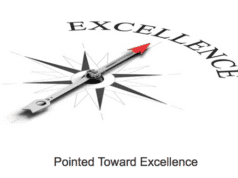Mark's note: One more guest post, Andy Wagner following up his recent guest post, “Being the Change.”
Each morning at work the day starts with a production meeting. That is where I get my list of fires to put out for the day. When the staff gets up to leave the meeting, it reminds me of the opening sequence to the old “Hill Street Blues” television show.
We race out to the floor, to the gemba, eager to put in place the quick fixes, and too busy for real fixes.
It had to stop.
I discovered that in the first thirty or so minutes after the production meeting, I didn't get any beeps on my Nextel phone. It was quiet and crisis free.
I picked an odd way to turn the tide. On my list of things to do was maintenance of a database. It had been neglected for 9 months since the former owner retired. Only three people, including me, were affected by the neglect, but the impact was high. On the rare occasions that we needed it, it was usually time critical and, without it, we were forced to redo work or search for the old work manually. Frustrating and time consuming.
Although it wasn't a particularly inspired decision, I prioritized catching up on 9 months of database maintenance. I set a daily goal and made it my morning routine. It took about a month, working on it every morning, to break through the backlog. I continued to work manageable chunks each morning, watching as the task came back under control. It was clear early on that maintenance, once the backlog was gone, would be trivial. That meant I could do more tasks with my morning silence.
I piled them on slowly. There were several obscure quality metrics hanging over my head. Addressing them daily meant that they never became fires to fight and my coworkers didn't have to deal with the painful work-arounds that resulted from neglecting them. The next task that I added to my standard work was delivering a priority list to my co-worker. The priority list, delivered every day, made a big difference in how the co-worker helped me. I had always given him a list Thursdays and Fridays as we neared our deadline for weekly output, but Thursdays and Fridays everybody else was piling on for his help so, priority or not, it was hit and miss. When I put my list in front of him Mondays and Tuesdays, he got to my work first. There was still work to do on Friday, but not as much.
By Christmas shut-down, I felt my stress level coming down. There were two reasons. One, I was rebelling against the crisis culture to fix things before they became problems, if only in very small ways, and two, I no longer had these tasks hanging over my head. I was catching up on some chronic backlogs that had been nagging for some time. People and circumstances that I had used as excuses no longer bothered me. It was the system and culture that were the problems, and I had discovered a process to fix that.
It was a simple checklist, four items at that point, but I had a process that was working and that I could apply to other things. Time to leverage.
Please scroll down (or click) to post a comment. Connect with me on LinkedIn.
If you’re working to build a culture where people feel safe to speak up, solve problems, and improve every day, I’d be glad to help. Let’s talk about how to strengthen Psychological Safety and Continuous Improvement in your organization.









[…] Continue reading Part 2, “Not Putting Out Fires.” […]
[…] and I have to tell you, I’m thrilled with progress to date, as described in posts one and two of this […]
Comments are closed.